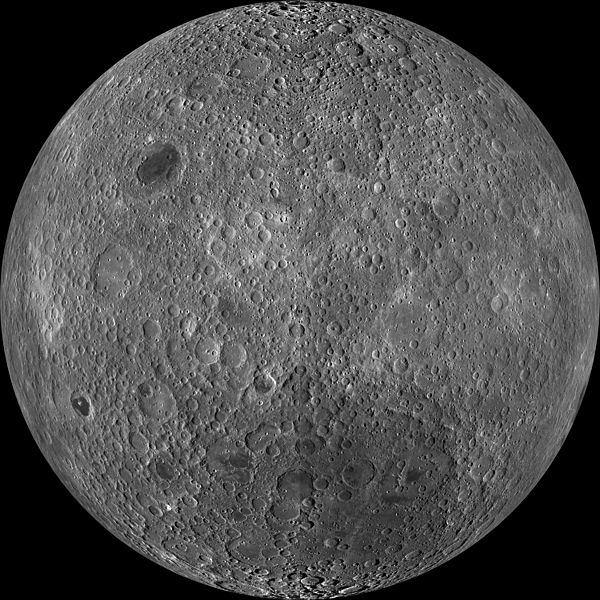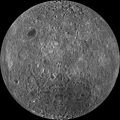File:Moon Farside LRO.jpg

Hammi agarsiisa yaalii: pikseelii 600 × 600. Kabiraa furmaatawwan: pikseelii 240 × 240 | pikseelii 480 × 480 | pikseelii 768 × 768 | pikseelii 1,024 × 1,024 | pikseelii 2,048 × 2,048 | pikseelii 18,000 × 18,000.
Faayila abbaa (18,000 × 18,000 pixels, file size: 85.34 MB, MIME type: image/jpeg)
Seenaa faayilaa
Faayilicha sa'aa san akka itti mul'atetti ilaaluuf guyyaa/yeroo cuqaasi.
| Guyyaa/Sa'aa | Qeensa abgudduu | Kallattiiwwan | Fayyadamaa | Yaada | |
|---|---|---|---|---|---|
| amma | 23:47, 19 Bitootessa 2014 |  | 18,000 × 18,000 (85.34 MB) | Huntster | High resolution mosaic. |
| 04:12, 9 Caamsaa 2011 |  | 1,600 × 1,600 (1.44 MB) | Bubba73 | {{Information |Description ={{en|1=Far side of the Moon, by NASA's Lunar Recon. Orbiter}} |Source =http://apod.nasa.gov/apod/image/1104/farside_lro1600.jpg |Author =NASA - LRO |Date =2011? |Permission = |other_versions = } |
Fayyadamiinsa faayilaa
Fuulotni faayila kana fayyadaman hin jiru.
Fayyadamiinsa faayila guutu addunyaa
Wikileen biroo kan armaan gadi jiran fayila kana fayyadamu:
- Fayyadamiinsa af.wikipedia.org irratti
- Fayyadamiinsa az.wikipedia.org irratti
- Fayyadamiinsa be.wikipedia.org irratti
- Fayyadamiinsa bjn.wikipedia.org irratti
- Fayyadamiinsa bn.wikipedia.org irratti
- Fayyadamiinsa bs.wikipedia.org irratti
- Fayyadamiinsa ca.wikipedia.org irratti
- Fayyadamiinsa cs.wikipedia.org irratti
- Fayyadamiinsa de.wikipedia.org irratti
- Fayyadamiinsa en.wikipedia.org irratti
- Fayyadamiinsa en.wikibooks.org irratti
- Fayyadamiinsa en.wikiversity.org irratti
- Solar System, technical/Moon
- User:Marshallsumter/Radiation astronomy2/Visuals
- Draft:Original research/Planets
- User:Marshallsumter/Radiation astronomy2/Visuals/Quiz
- User:Marshallsumter/Rocks/Rocky objects/Astronomy
- User:Marshallsumter/Radiation astronomy/Courses/Principles/Hourly 2
- User:Marshallsumter/Radiation astronomy/Courses/Principles/Midterm quiz
- User:Marshallsumter/Radiation astronomy/Courses/Principles/Final quiz
- Titan/Quiz
- User:Marshallsumter/Rocks/Rocky objects
- Draft:Enceladus/Quiz
- Moon/Quiz
- Stars/Sun/Heliology/Quiz
- Earth/Quiz
- Stars/Reds/Quiz
- Draft:Dione/Quiz
- User:Marshallsumter/Radiation astronomy2/Scattered disks/Quiz
- User:Marshallsumter/Radiation astronomy1/Kuiper belts/Quiz
- Liquids/Liquid objects/Moon
- User:Marshallsumter/Radiation astronomy/Craters
- Fayyadamiinsa es.wikipedia.org irratti
Mul'isa fayyadama duniyaalessa edaasaa harshama kanaa.

